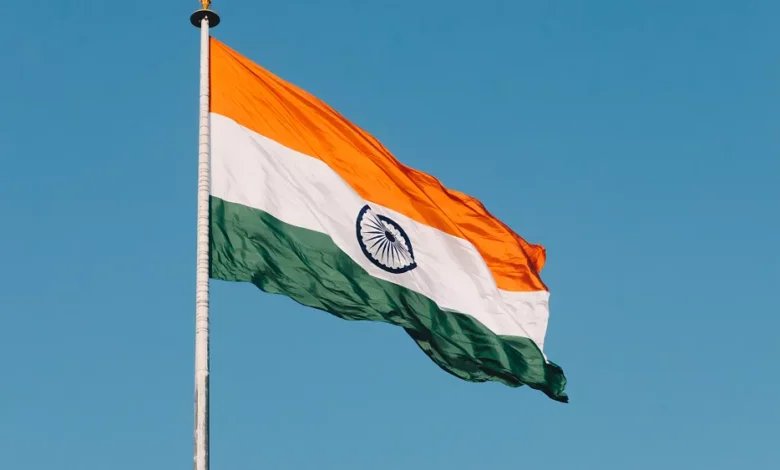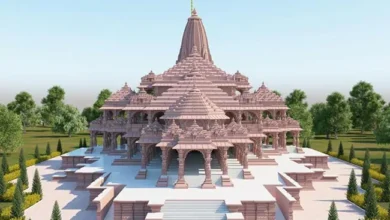India vs. Bharat: A historical and political debate
Navigating Historical Legacy and Political Divisions

The debate surrounding the names “India” and “Bharat” has resurfaced in recent times, igniting fervent discussions and political divisions. Both names hold deep historical and cultural significance for the nation, making this debate far from trivial. It is crucial to explore the roots of this discourse, its constitutional aspects, and the broader implications it carries for India’s identity.
Historical Perspectives on the Names “India” and “Bharat”
India’s nomenclature conveys a rich tapestry of historical influences. The term “India” is an Anglicization of the Sanskrit word “Sindhu,” referring to the Indus River. It gained prominence during the British colonial era (1858-1947) and has since become globally recognized.
In contrast, “Bharat” has its origins deeply rooted in ancient Indian texts like the Mahabharata and Vishnu Purana. These texts describe a vast landmass inhabited by humans, with one region referred to as Bharatavarsa. This name represents a profound cultural and historical identity for India.
Constitutionality and the “India, that is Bharat” Reference
India’s Constitution acknowledges both names as legitimate. Article 1 of the Indian Constitution opens with the words, “India, that is Bharat, shall be a Union of States.” This constitutional provision underscores the importance of preserving both identities, emphasizing unity in diversity.
The Constituent Assembly, comprising luminaries like Baba Saheb Ambedkar, Rajendra Prasad, and Jawaharlal Nehru, engaged in a deliberative process when deciding upon these names. To question their patriotism or understanding of Indian civilization is not only misguided but an affront to their immense contributions to the country.
Recent Developments: The Political Controversy
The controversy surrounding the names “India” and “Bharat” has resurfaced in recent years. The government of Prime Minister Narendra Modi has included “Bharat” in official communications, sparking discussions about a potential name change. This move aligns with a broader nationalist sentiment and distancing from colonial legacies.
The Rashtriya Swayamsevak Sangh (RSS), an ideological mentor of the ruling Bharatiya Janata Party (BJP), has advocated for adopting “Bharat” as the exclusive name for the country. This stance has garnered support from some BJP leaders. However, no formal name change proposal has been confirmed.
Opposition parties, anticipating the BJP’s nationalist narrative, have named themselves “INDIA” ahead of the 2024 Indian general election. This reflects the political battleground where names and identities are wielded as instruments of power.
The Duality of “Hindustan”
Another name frequently invoked in this discourse is “Hindustan,” which means “land of the Indus” in Persian. It gained popularity during the Mughal era and continues to be used by Hindu nationalists. However, it lacks official recognition in the Indian Constitution.
The Social Media Debate
Social media has amplified this debate, with opinions ranging from staunch opposition to enthusiastic support. The polarization reflects the wider political and cultural divisions within India.
Critics argue that the government’s push for “Bharat” over “India” is an attempt to rewrite history and marginalize the colonial past. They perceive it as an affront to India’s foundational principle of unity in diversity.
Conversely, supporters argue that “Bharat” is a more authentic and anti-imperialist name that resonates with the nation’s rich history and culture. It is seen as a reclamation of India’s identity from its colonial legacy.
The Complex Layers of Identity
India’s identity is a complex interplay of historical, cultural, and political factors. The names “India,” “Bharat,” and “Hindustan” reflect different facets of this identity. Attempting to reduce this complexity to a singular name oversimplifies the nation’s rich heritage.
The Constitutional Balance
The Indian Constitution, which is the bedrock of the nation’s governance, strikes a careful balance by acknowledging both “India” and “Bharat.” This dual nomenclature underscores the inclusivity that defines India’s diverse society.
However, any move to change the official name must be approached with caution and careful deliberation. It should consider not only historical and cultural factors but also the potential consequences for national unity.
Conclusion
The debate over the names “India” and “Bharat” is emblematic of the broader discourse surrounding identity, nationalism, and historical legacies in India. While both names hold significant historical and cultural value, it is crucial to recognize that they coexist within the Indian Constitution.
The idea of changing the official name should be subjected to rigorous scrutiny and broad consensus, as it carries the weight of history and the aspirations of a diverse nation. In a world that often seeks to simplify complex identities, India’s dual nomenclature is a reminder of its pluralistic and multifaceted nature.
Ultimately, the names “India” and “Bharat” are not in opposition; they are complementary facets of a nation that draws strength from its diversity. Preserving both identities is a testament to India’s ability to honor its past while embracing its future.
Please, also have a look into : Blue Dart rebrands itself as Bharat Dart



